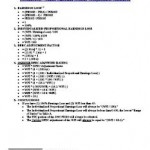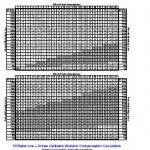Do-It-Yourself Ogilvie DFEC Analysis

An Ogilvie / DFEC analysis isn’t really difficult, especially when this website has a free Ogilvie / DFEC calculator. ((Photo courtesy of indigotimbre)) The problem comes when you have to prove all the math behind those calculations. This involves “showing your work.”
The best way to “show your work” is to take the reader through each step of the Ogilvie analysis. I’ve prepared a sample report (generated using a new service on this website) which provides a clear and easy to understand format for “showing your work.”
The steps are basically this:
- Step 0: 2005 PDRS rating string
- Step 1: Post-Injury Earnings of Applicant
- Step 2: Post-Injury Earnings of Similarly Situated Employees
- Step 3: Calculate Proportional Earnings Loss
- Step 4: Calculate Individualized Rating to Loss Ratio
- Step 5: Compare Individualized Rating to Loss Ratio to range of ratios for the FEC ranks
For those interested, here’s a more detailed explanation of each step in an Ogilvie / DFEC analysis.
When each step of the Ogilvie / DFEC analysis is stated clearly, the reader can see every assumption, step, and perform their own calculations to verify your conclusions. As long as the parties agree on the numbers used in an Ogilvie / DFEC calculation, they should always arrive at the same result.
Setting forth every single step of your Ogilvie / DFEC analysis lets you to spend less time arguing about the impact of Ogilvie and more time trying to get the case settled.





